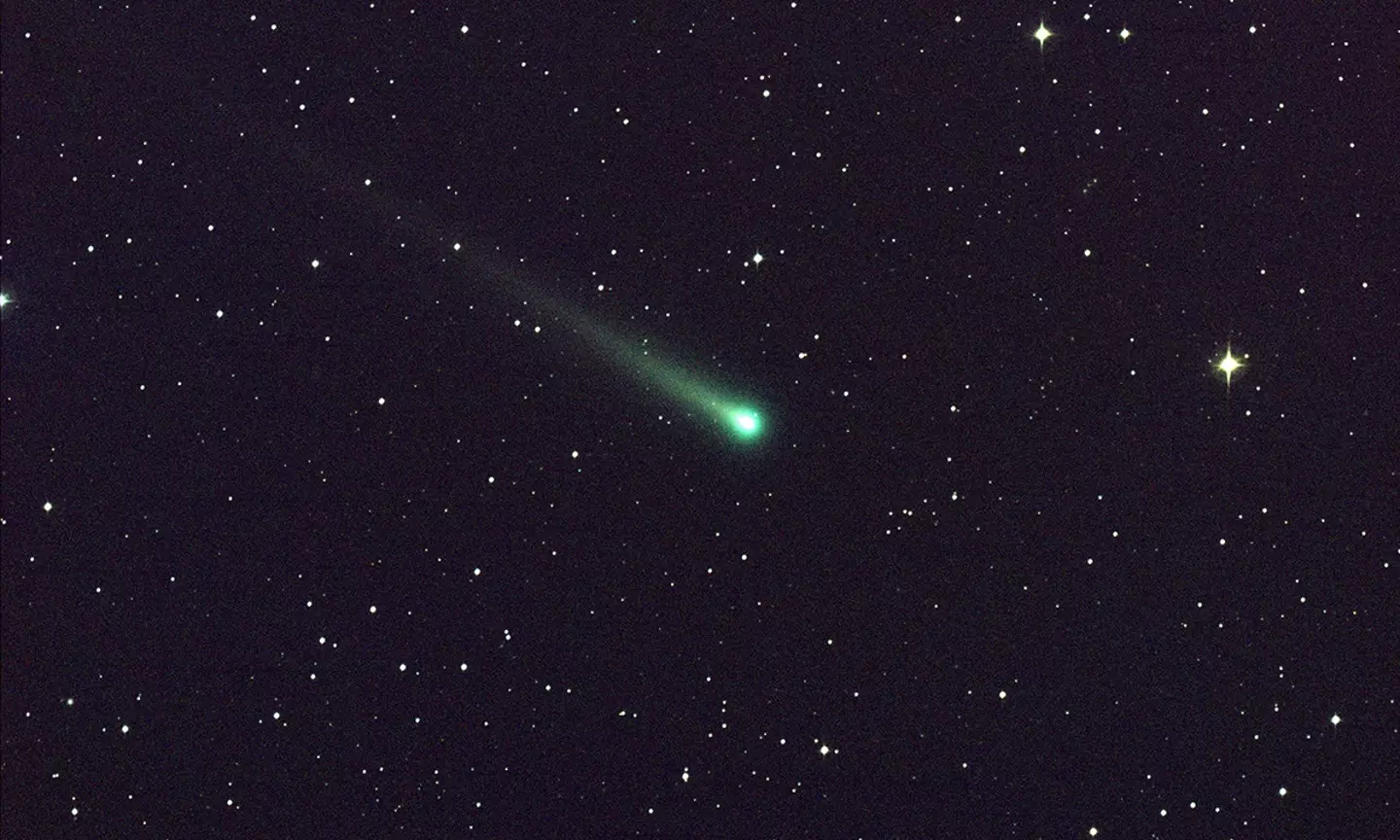.png)
A green comet that we haven't laid eyes on in more than 50 millennia will pass by Earth tonight (February 1), and, if you're lucky, you might be able to see this baby with the naked eye.
Even though the space rock has been zooming around the cosmos since God knows when, the green comet was only identified last year.
NASA calls it a dirty snowball comet, or by its proper and far less sexy name, C/2022 E3 (ZTF).
We've nicknamed it the Green Goblin for funzies, so we'll roll with that.
Advert
This comet last swung by our planet when the Neanderthals were kicking about, so that's pretty neat.

The Green Goblin will come to its closest point with Earth on the evening of February 2, right before speeding away off into the universe once again to be seen in another few million years.
We should also make this clear: the comet is harmless and we are not going to have a Don't Look Up or Armageddon scenario on our hands as the closest point is still 42 million kilometres away from Earth.
So calm your farm.
Advert
This whizzing rock can be recognised by the iconic green trail it leaves in its wake.
If you're in the Northern Hemisphere, you might be lucky enough to see the green-tailed beauty with the naked eye.
If you have a clear night tonight, head out with binoculars, a telescope, or even just your own two peepers to spot this bobby-dazzler.
However, it is best seen in the pre-dawn light, so you have two options: party all night and cap it off with a brilliant view, or start your day bright and early with a spectacular sight.
Either way, make sure you find a remote location to avoid any pesky light pollution from populated areas that may hamper your view of the cosmic ballet.
Advert
By February 10, the comet will be near Mars, which is a good landmark if you struggle to cop a geeze at this bad boy.
If you're not an old hat when it comes to stargazing, planets can be spotted as they don't glimmer in the sky like stars do.
So, if it ain't glittering, you've got yourself a planet. Or a satellite. Or pretty much anything that just isn't a star.
If you're in the Southern Hemisphere the comet will become visible to our little corner of the world in early February... so, right now.
Advert
Just make sure you head out armed with something to see the green-tailed sky goblin with ease.
NASA’s comet-and asteroid-tracking expert Paul Chodas said that while many comets have passed us by in recent years, this is one to watch.
"This one seems probably a little bit bigger and therefore a little bit brighter and it’s coming a little bit closer to the Earth’s orbit," Chodas said.
So get out there, gang, and go look up... or you'll have to wait a while to see the Green Goblin again in all of its glory.